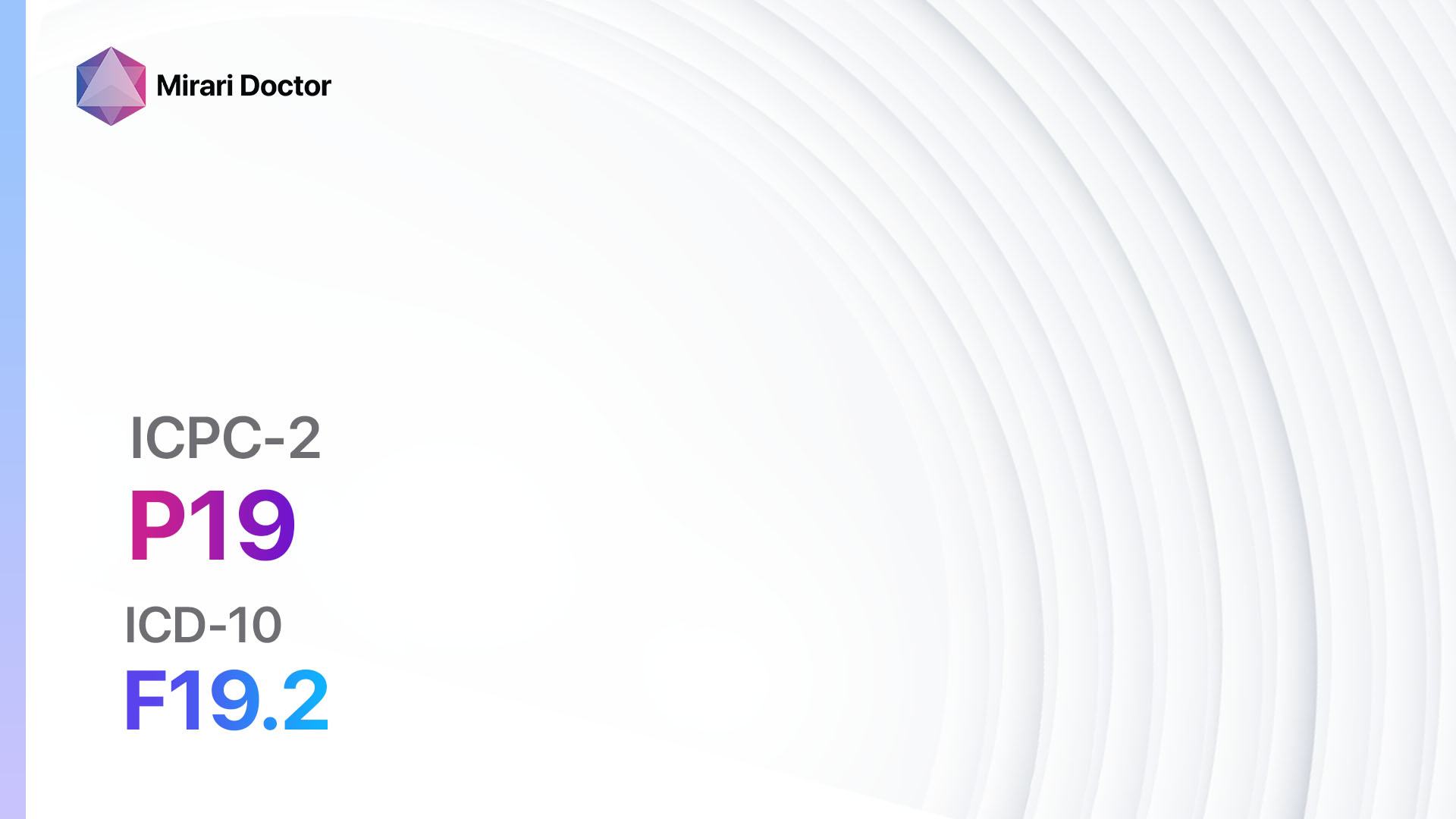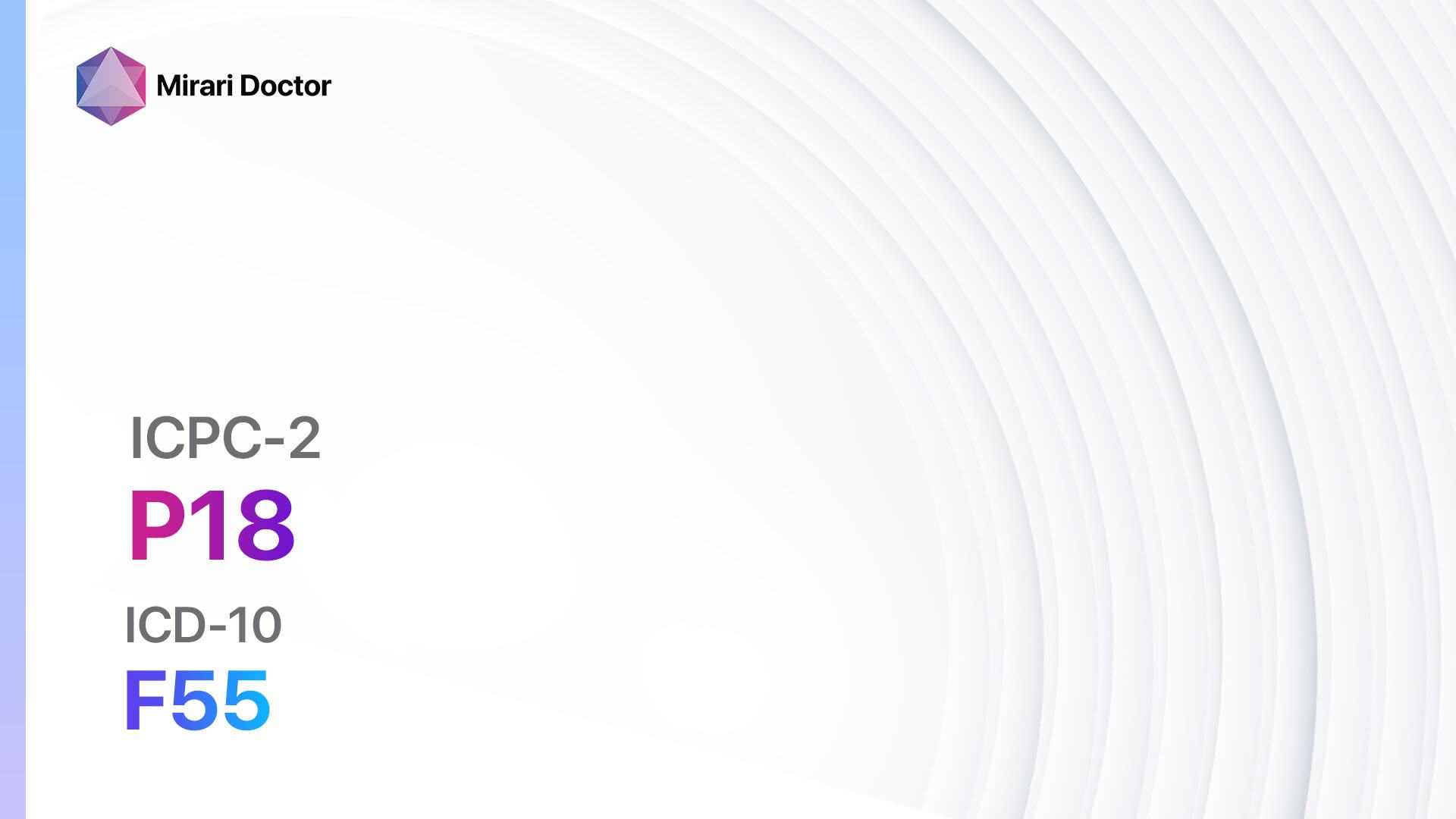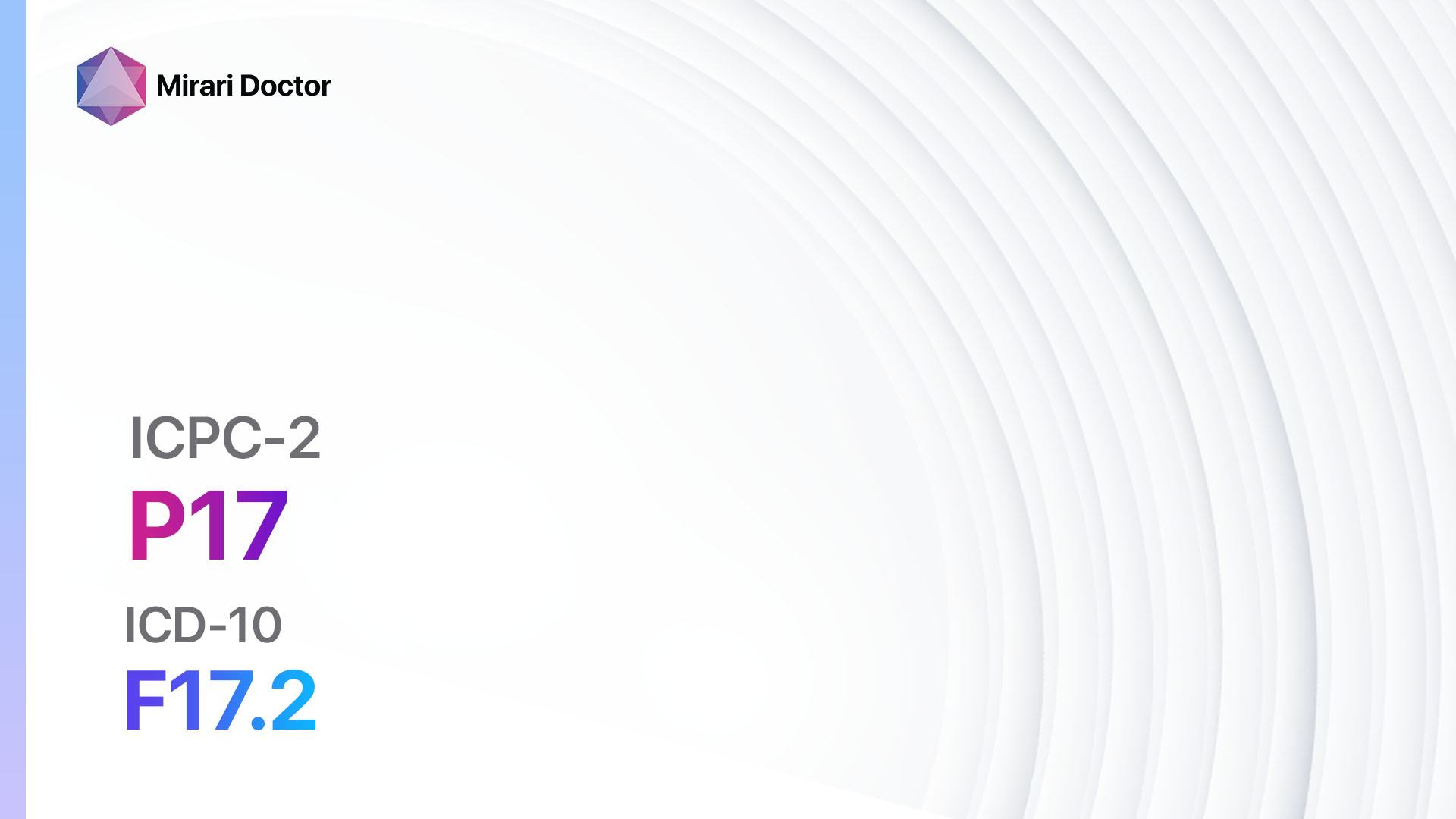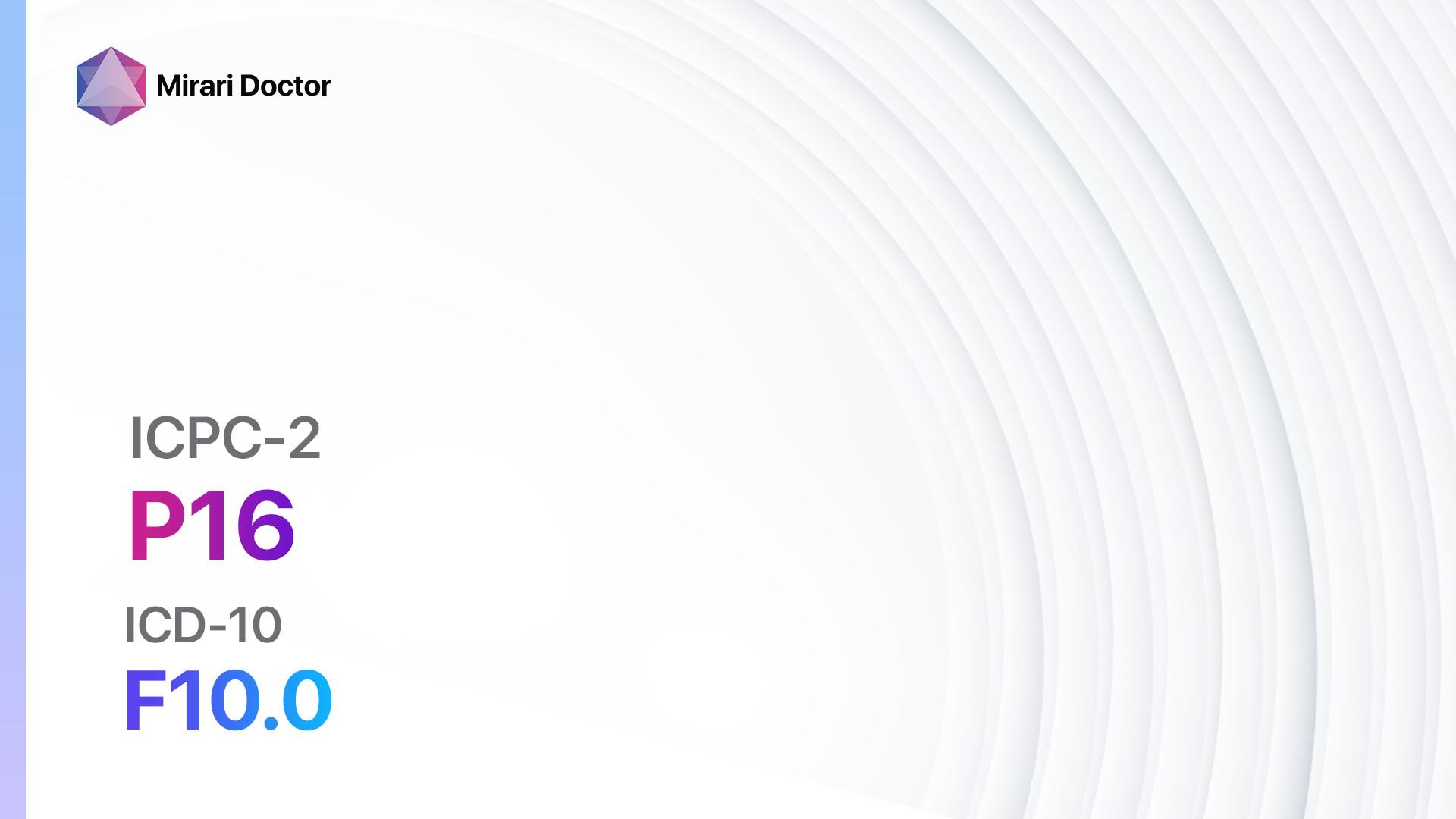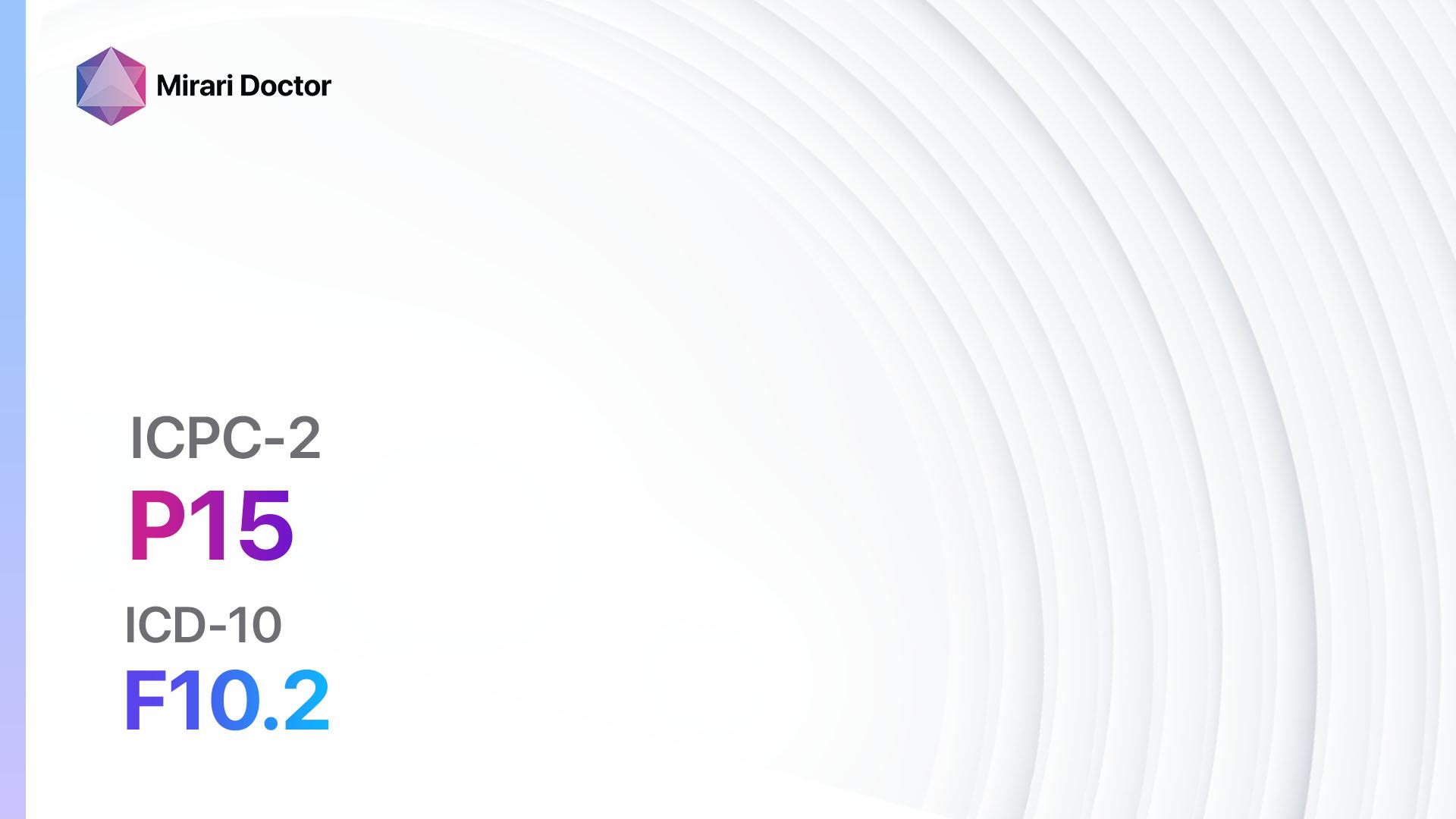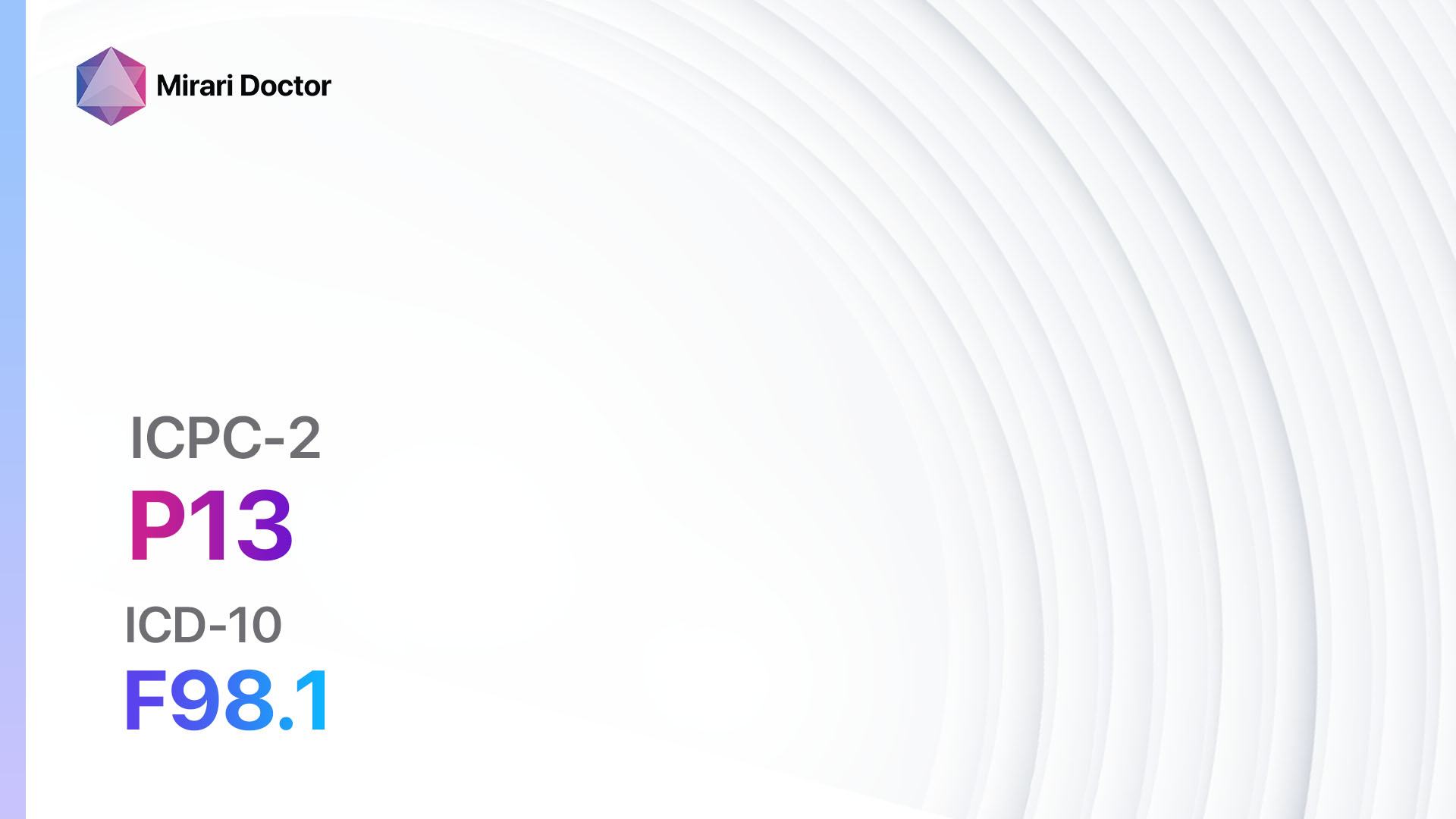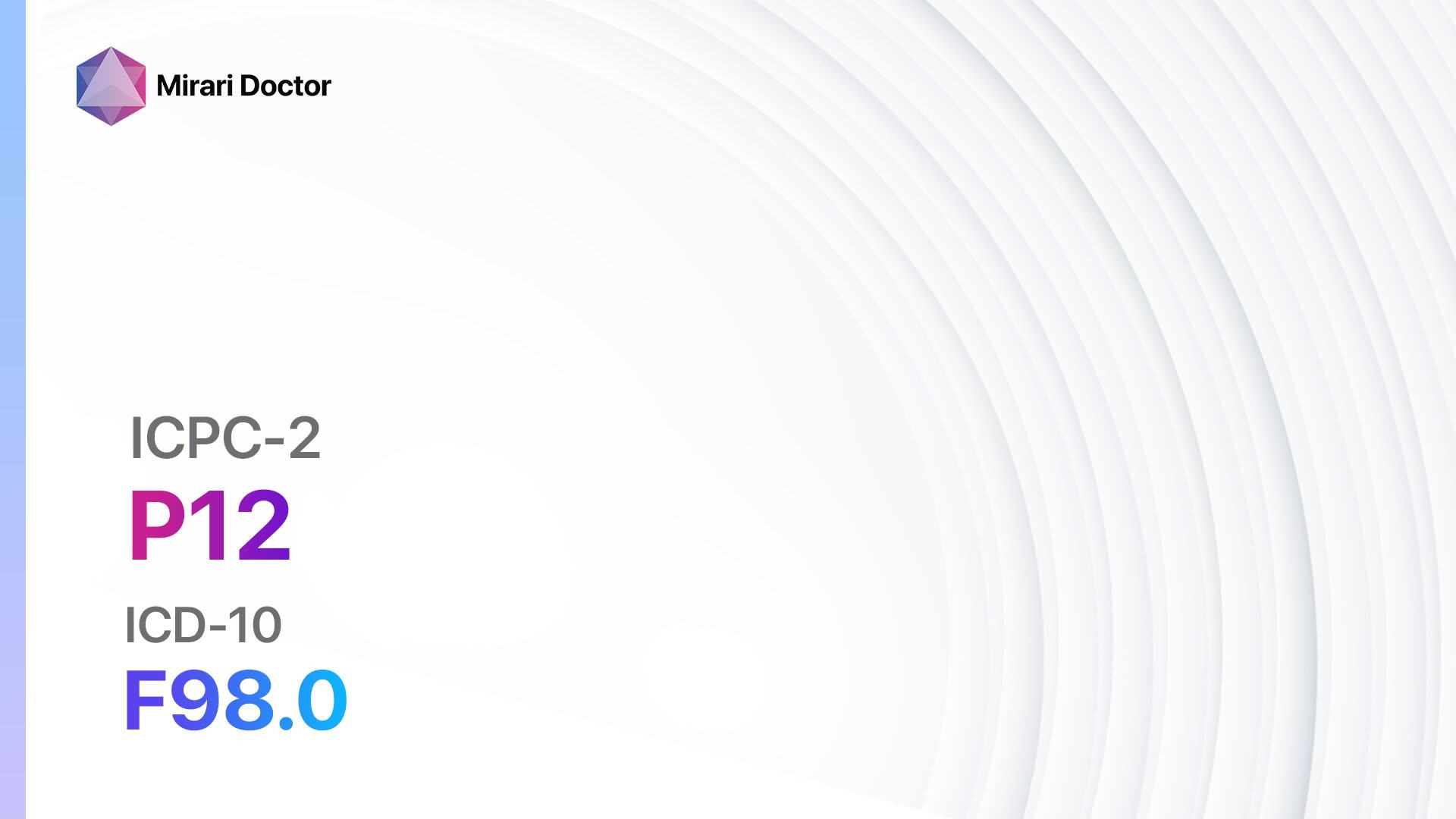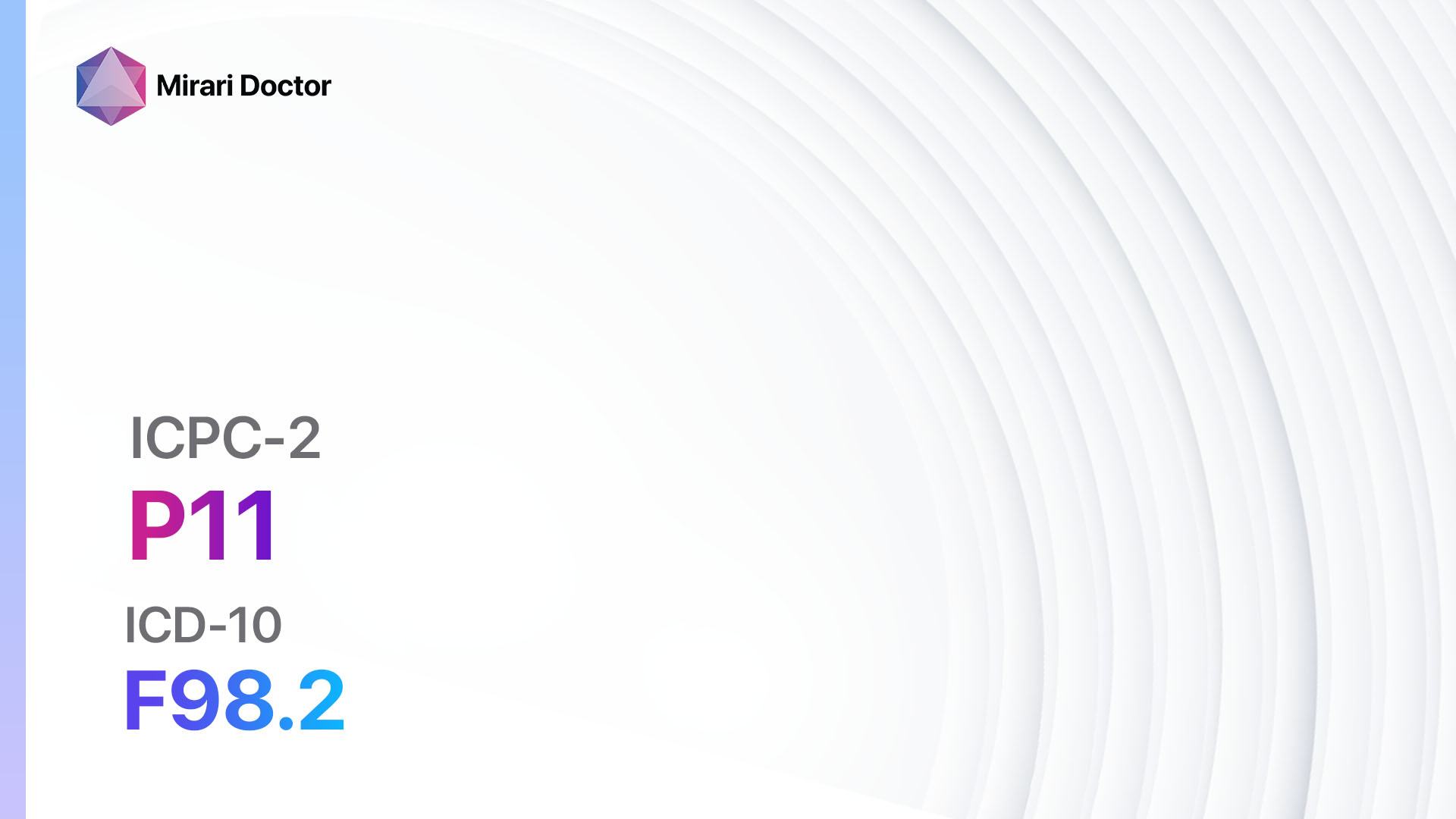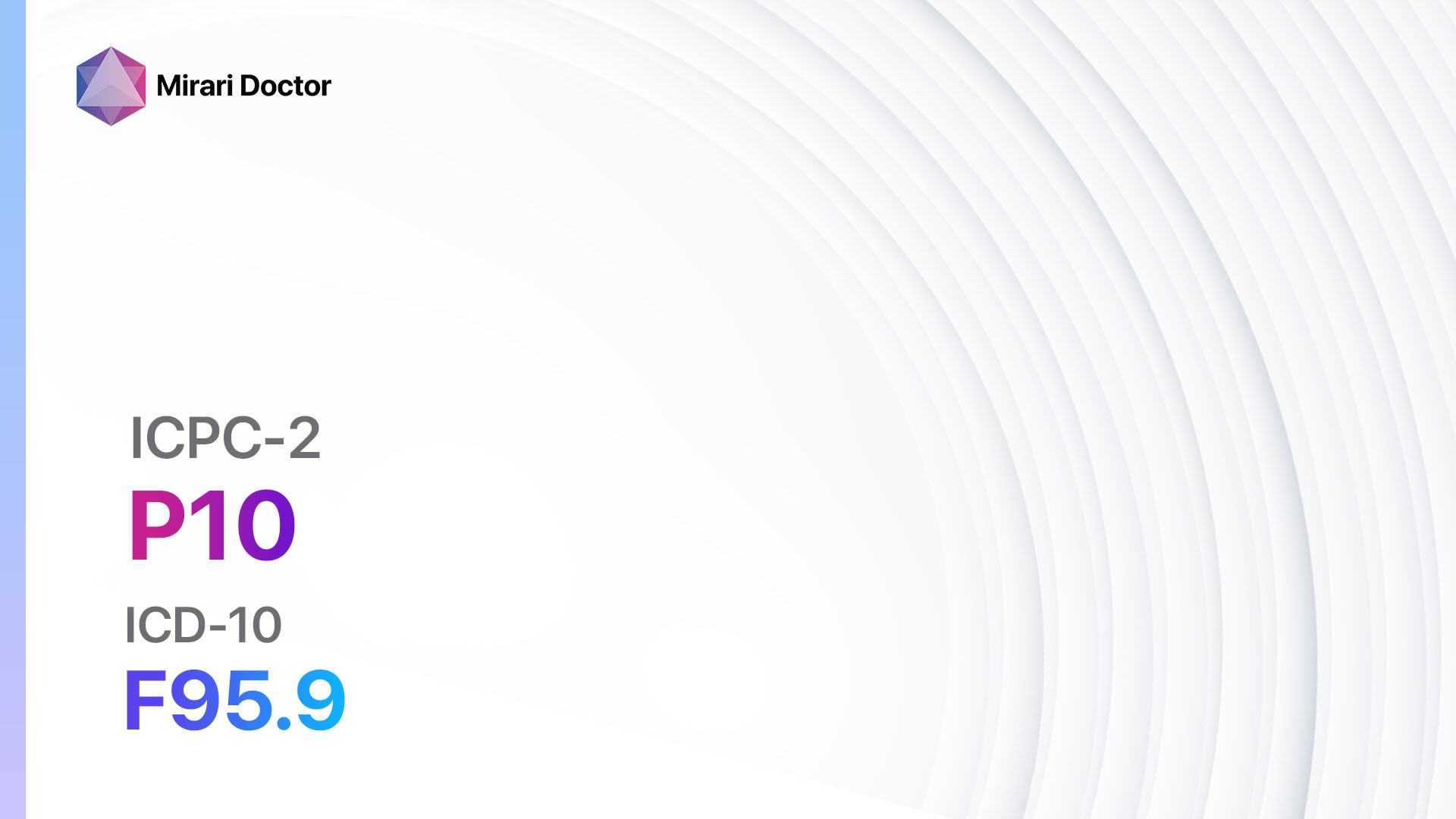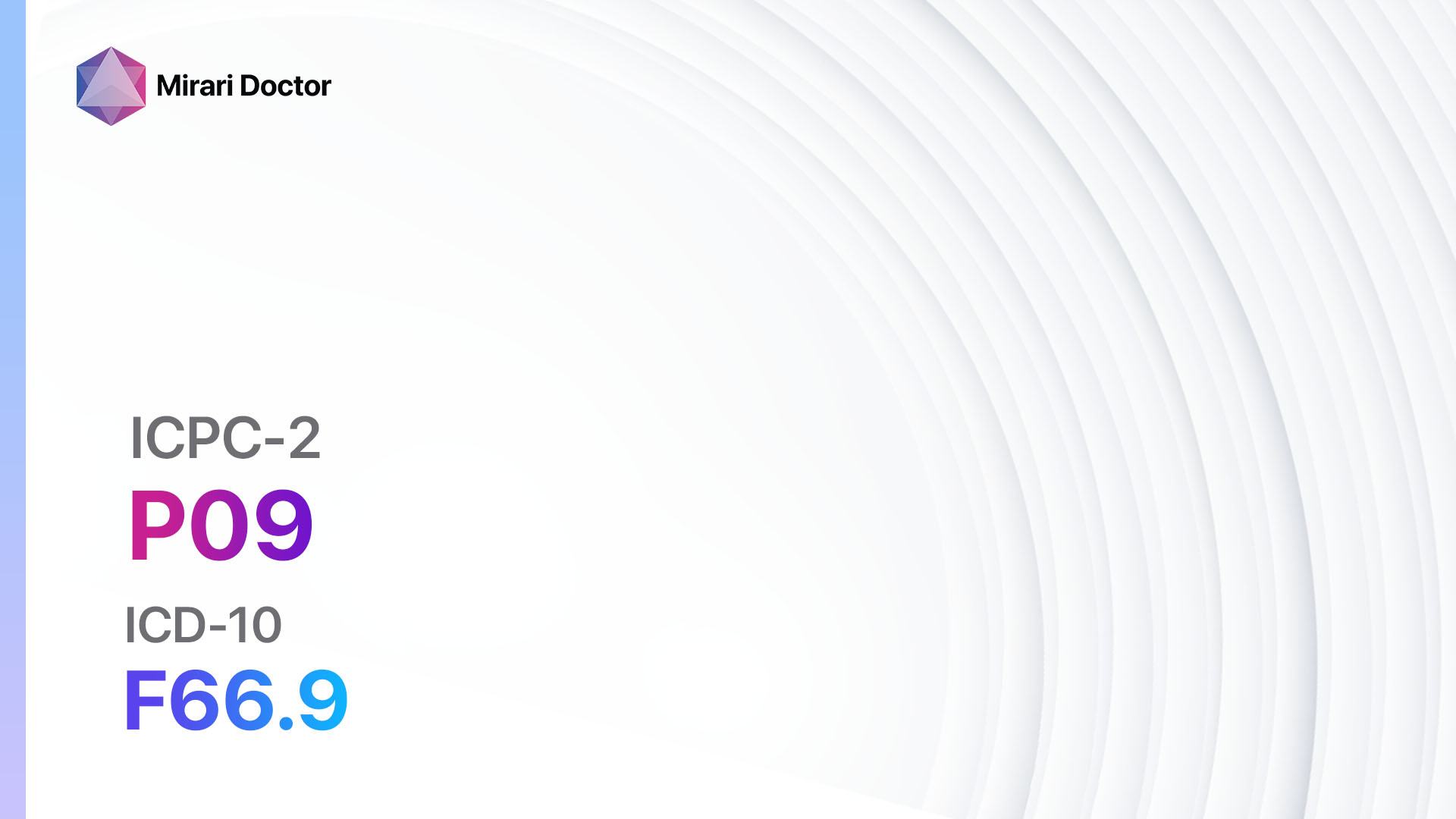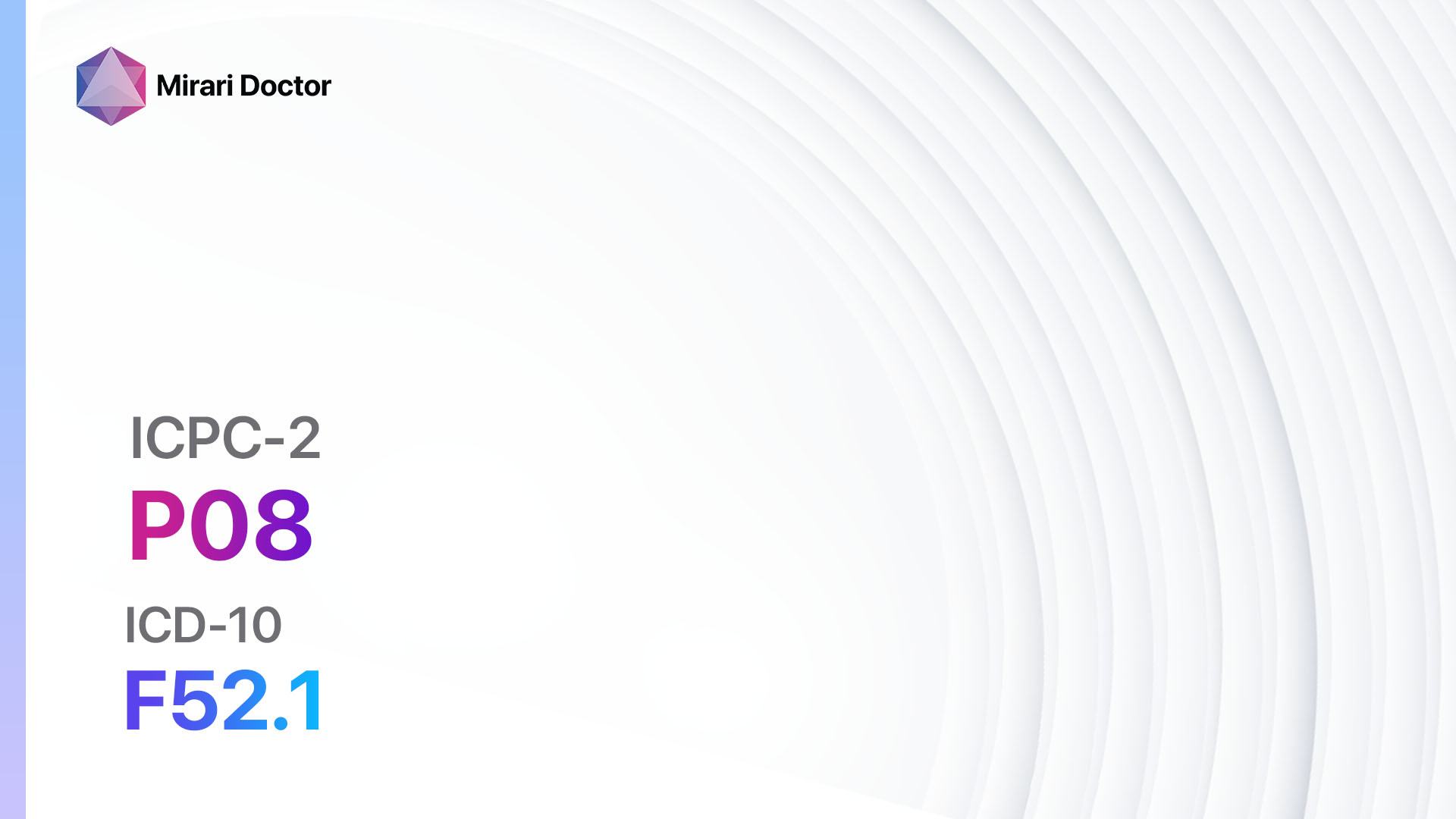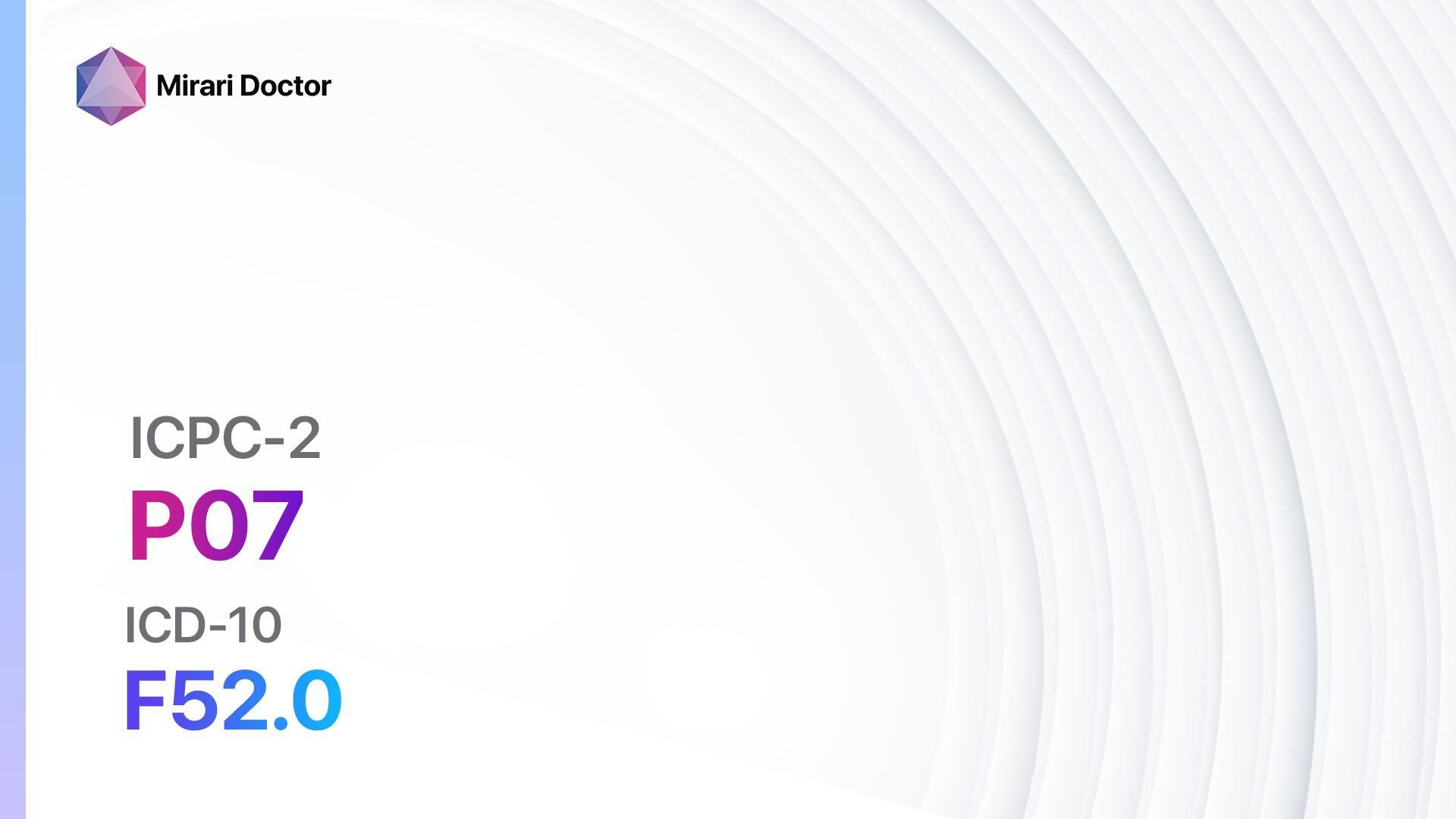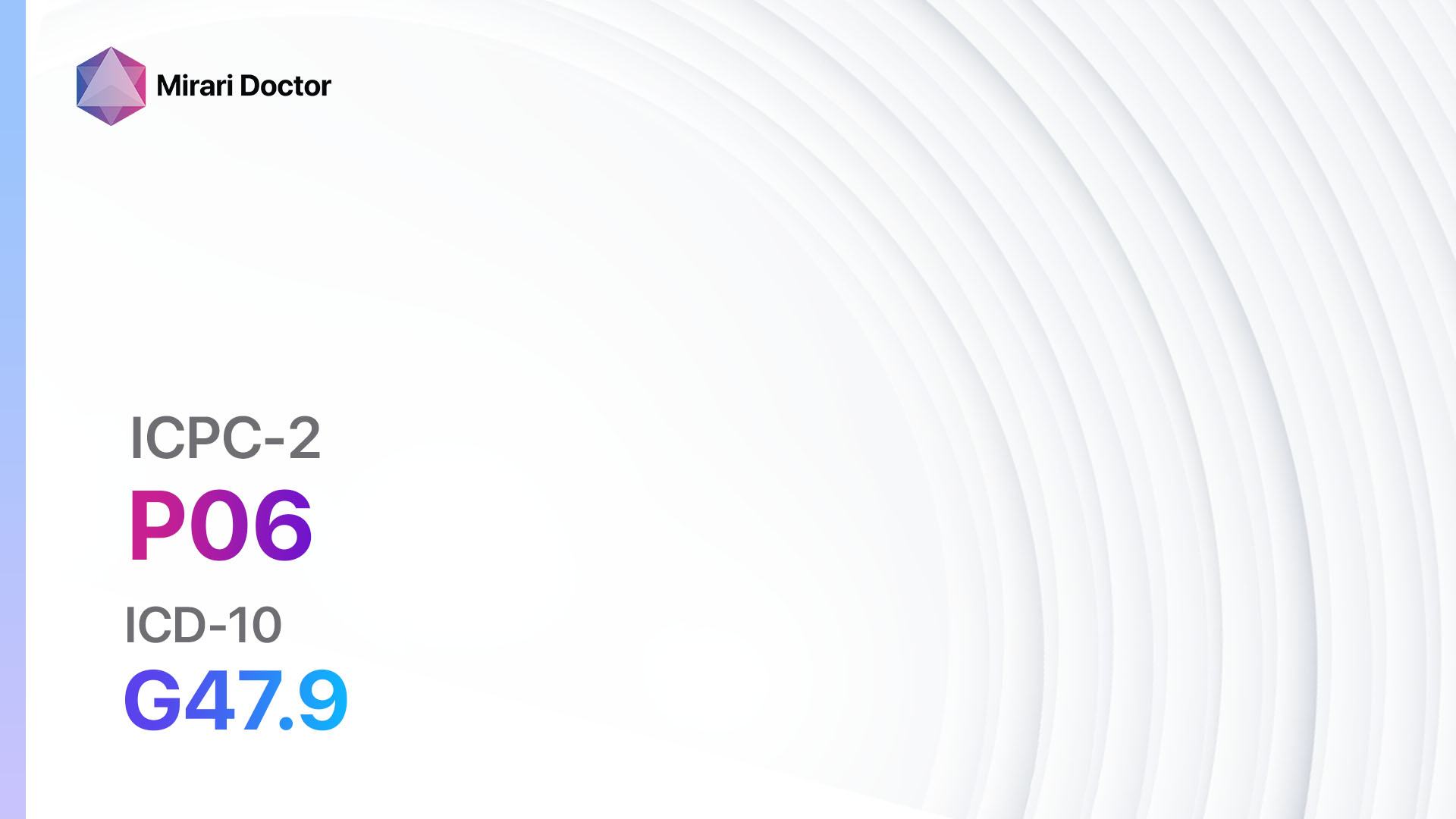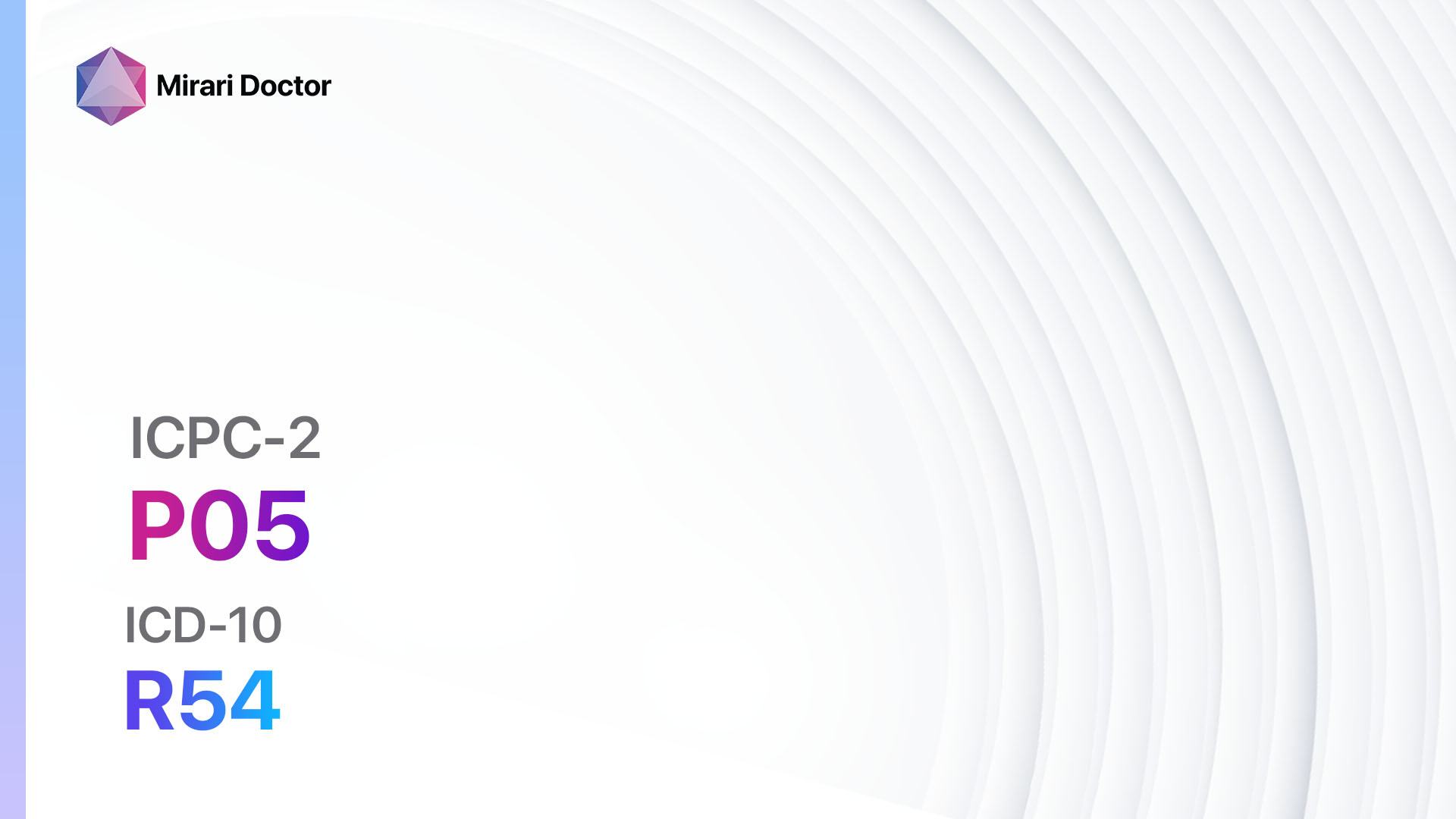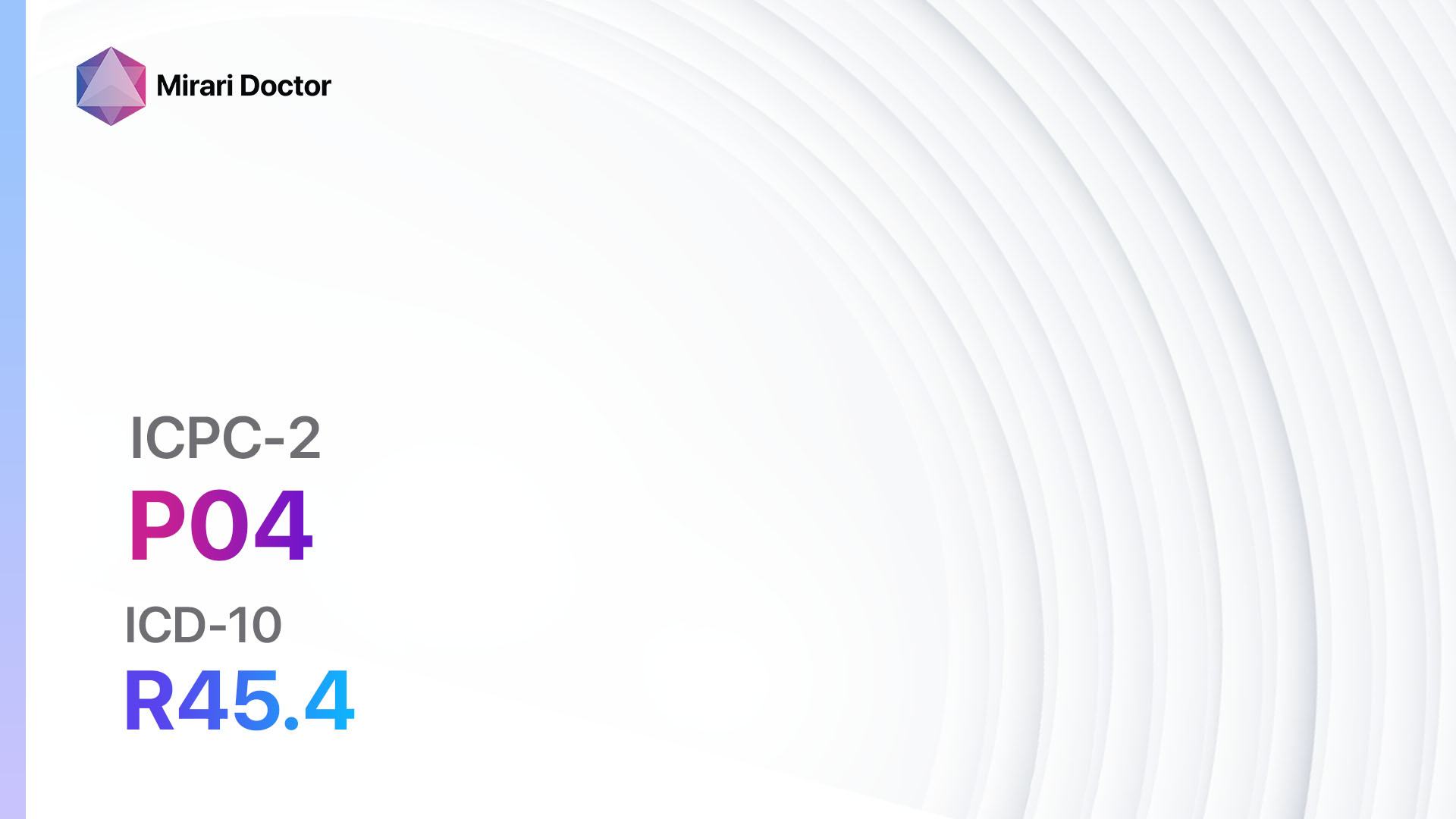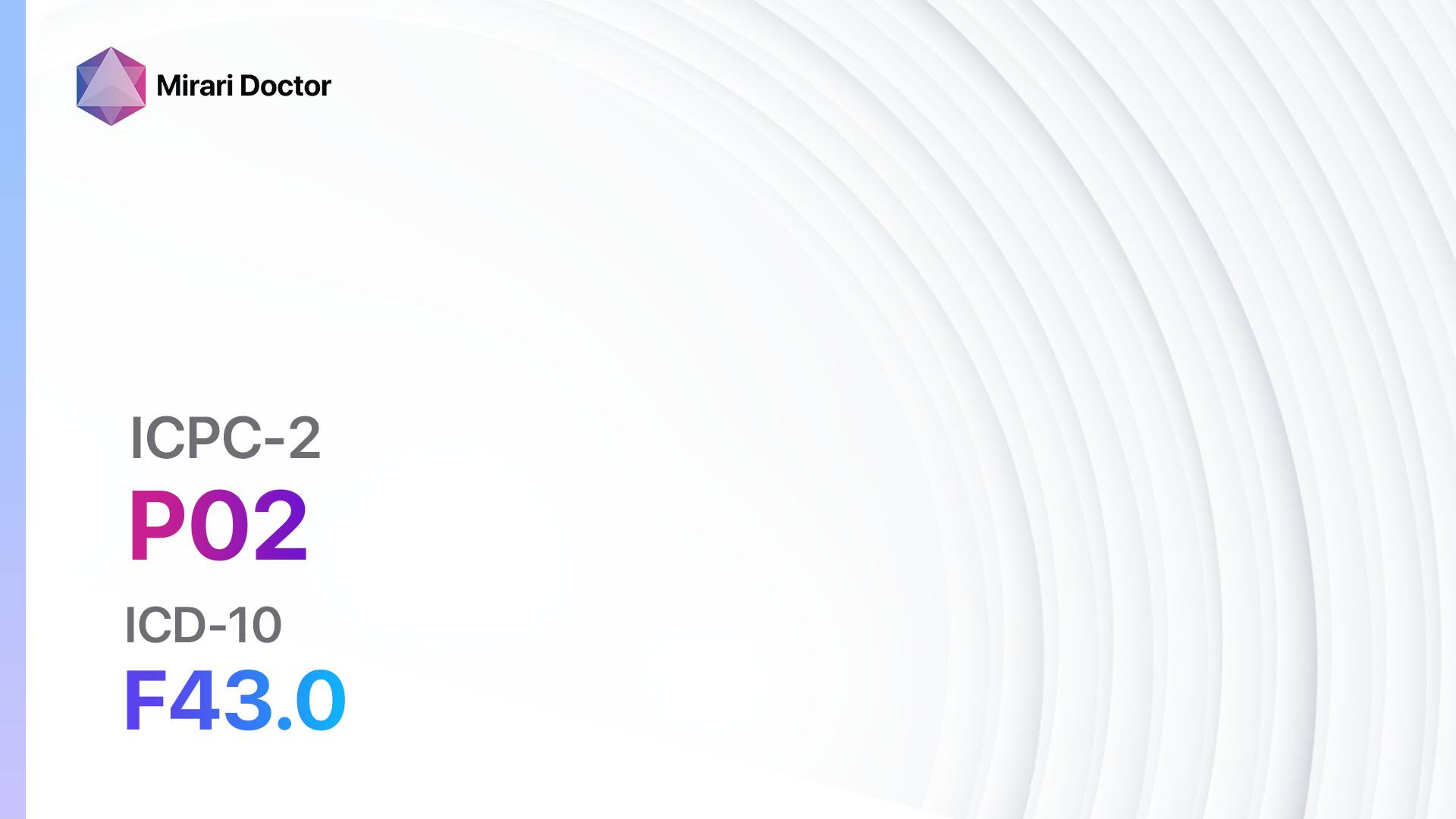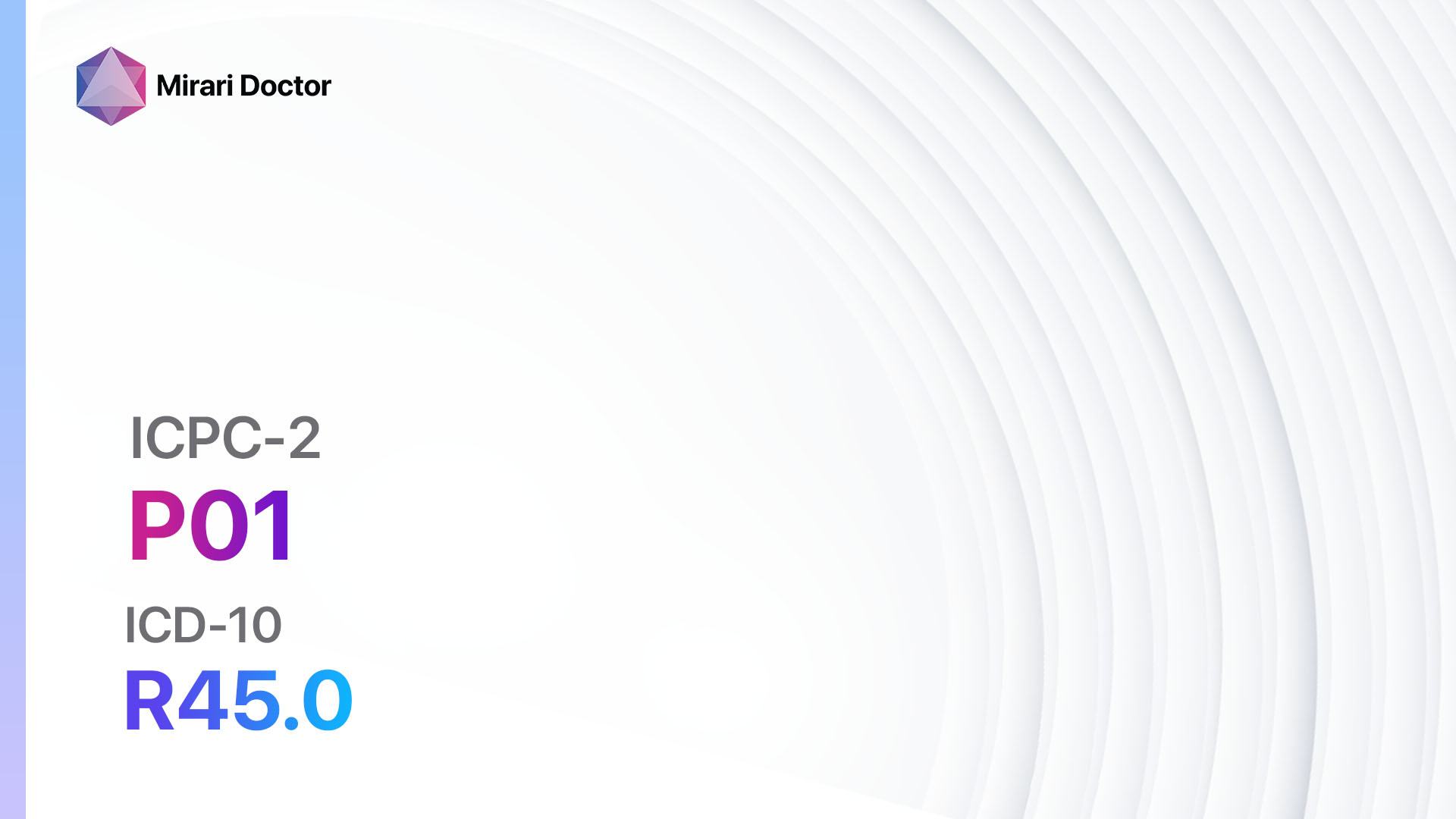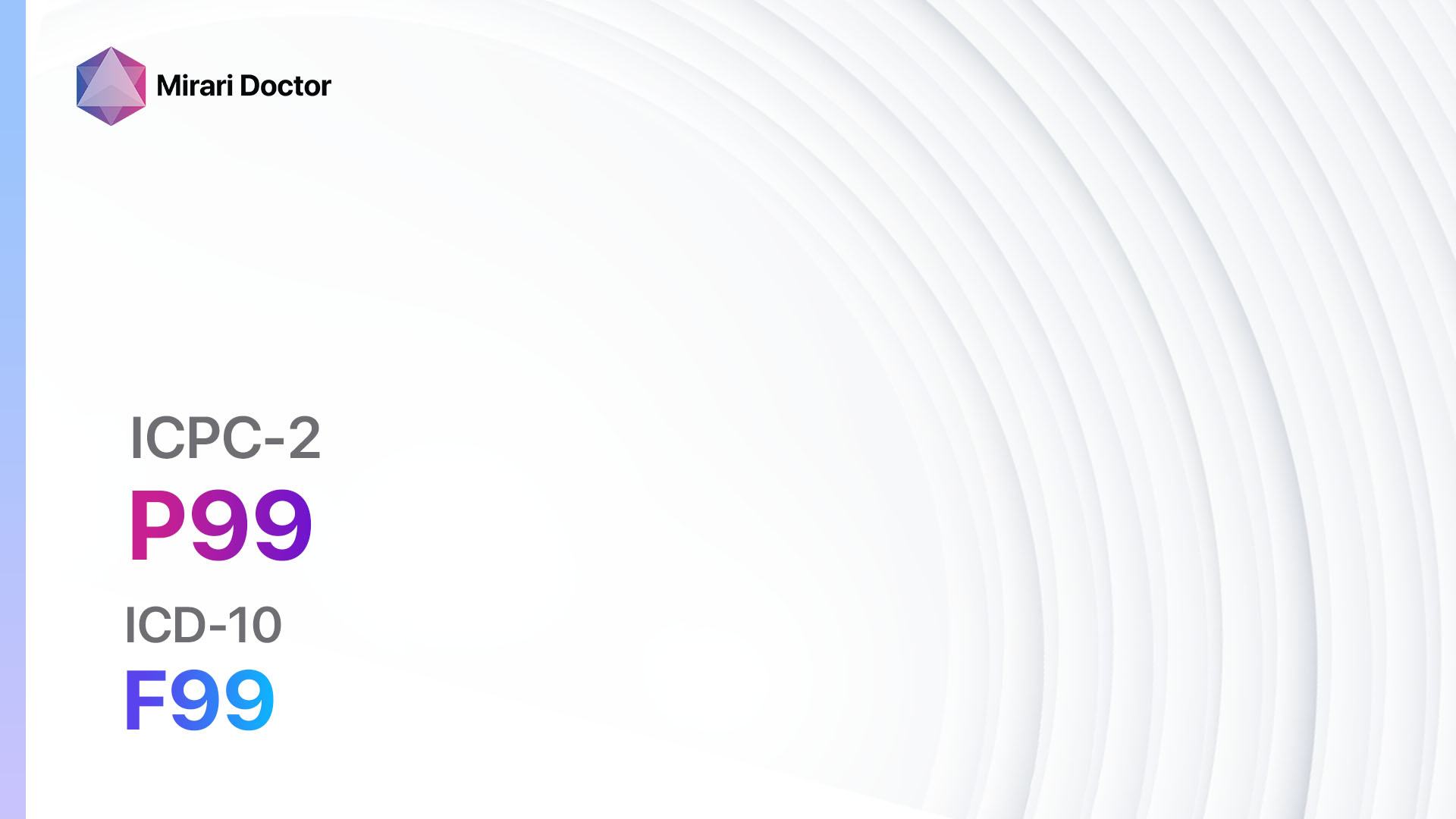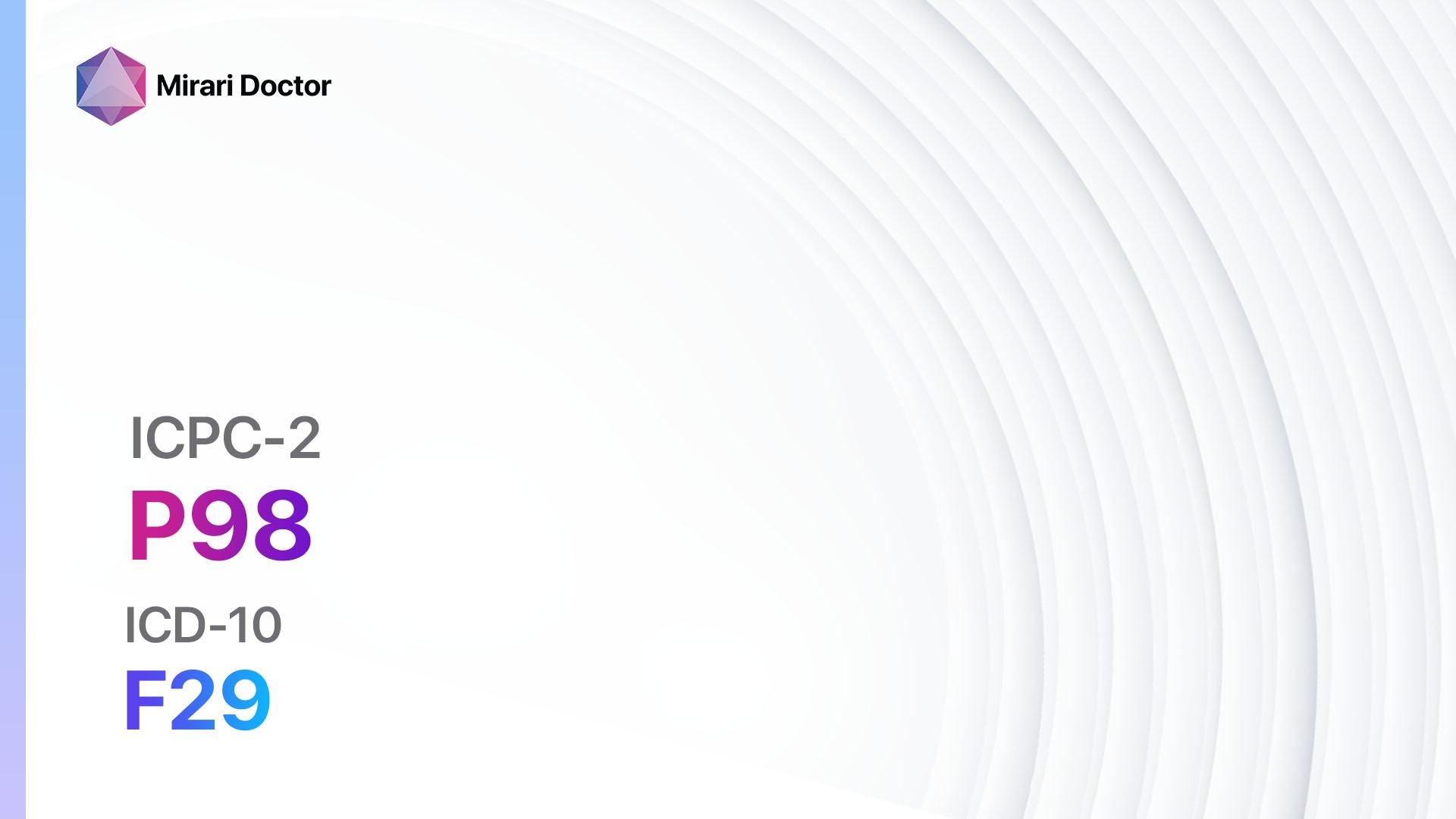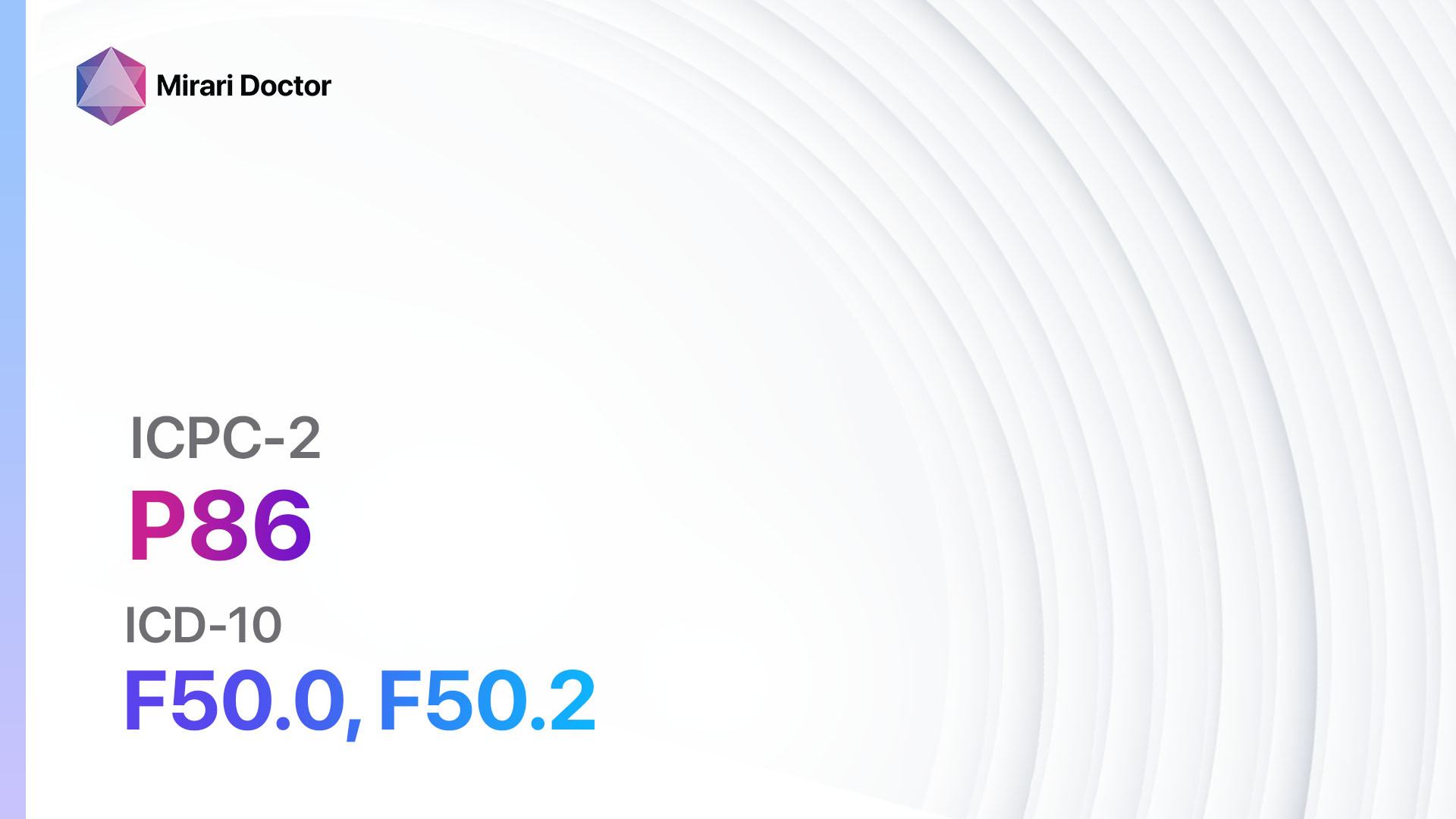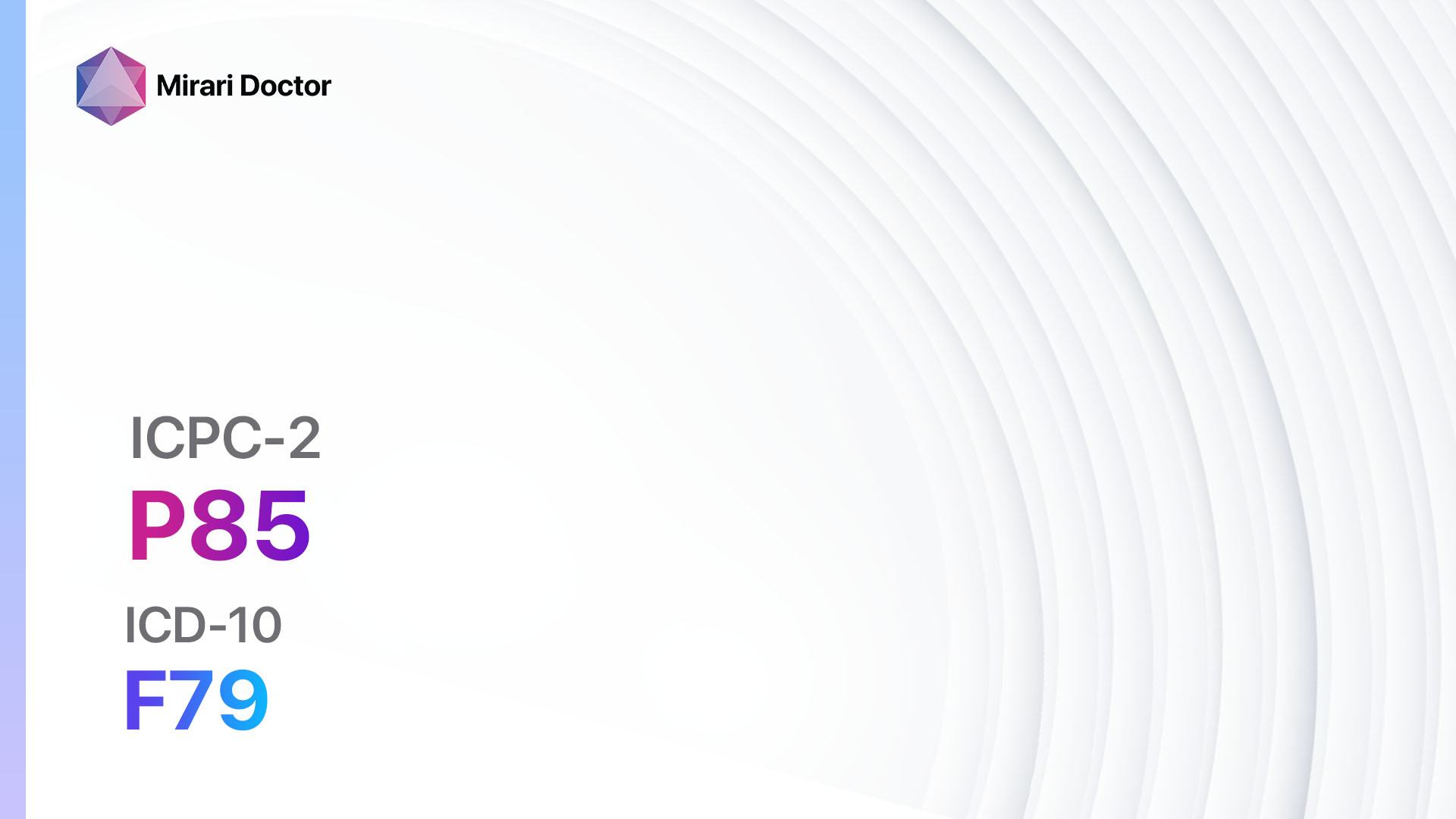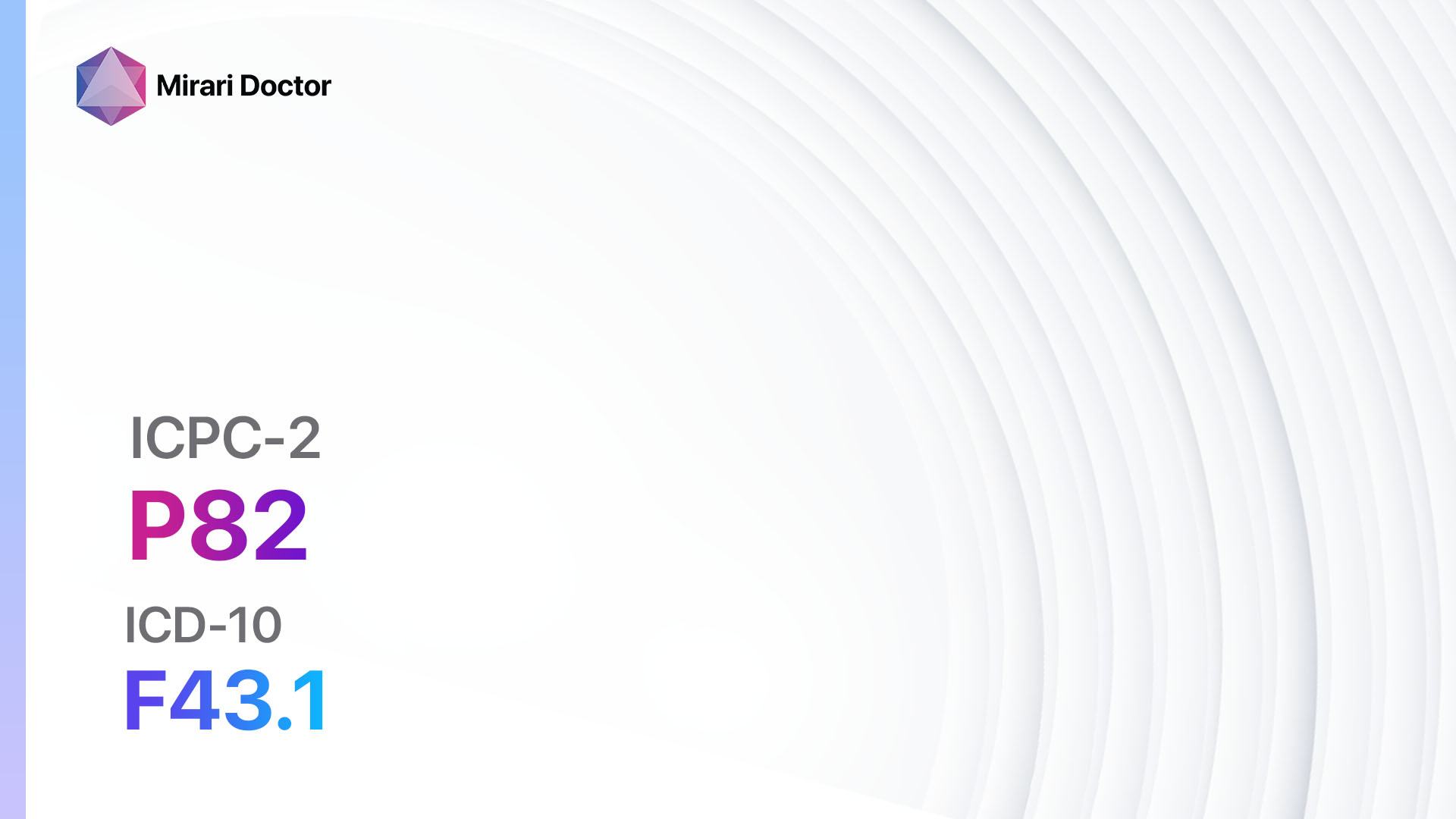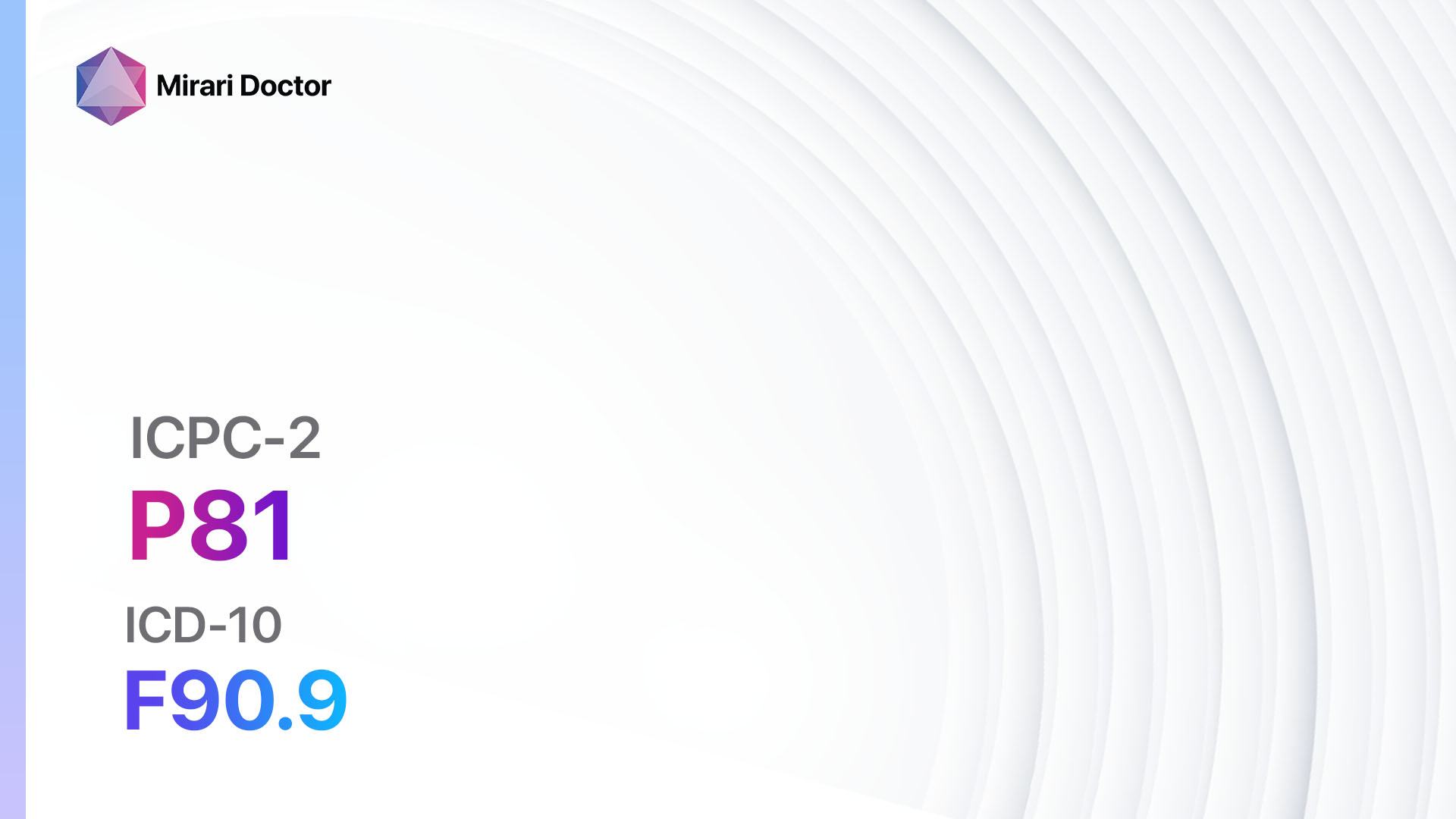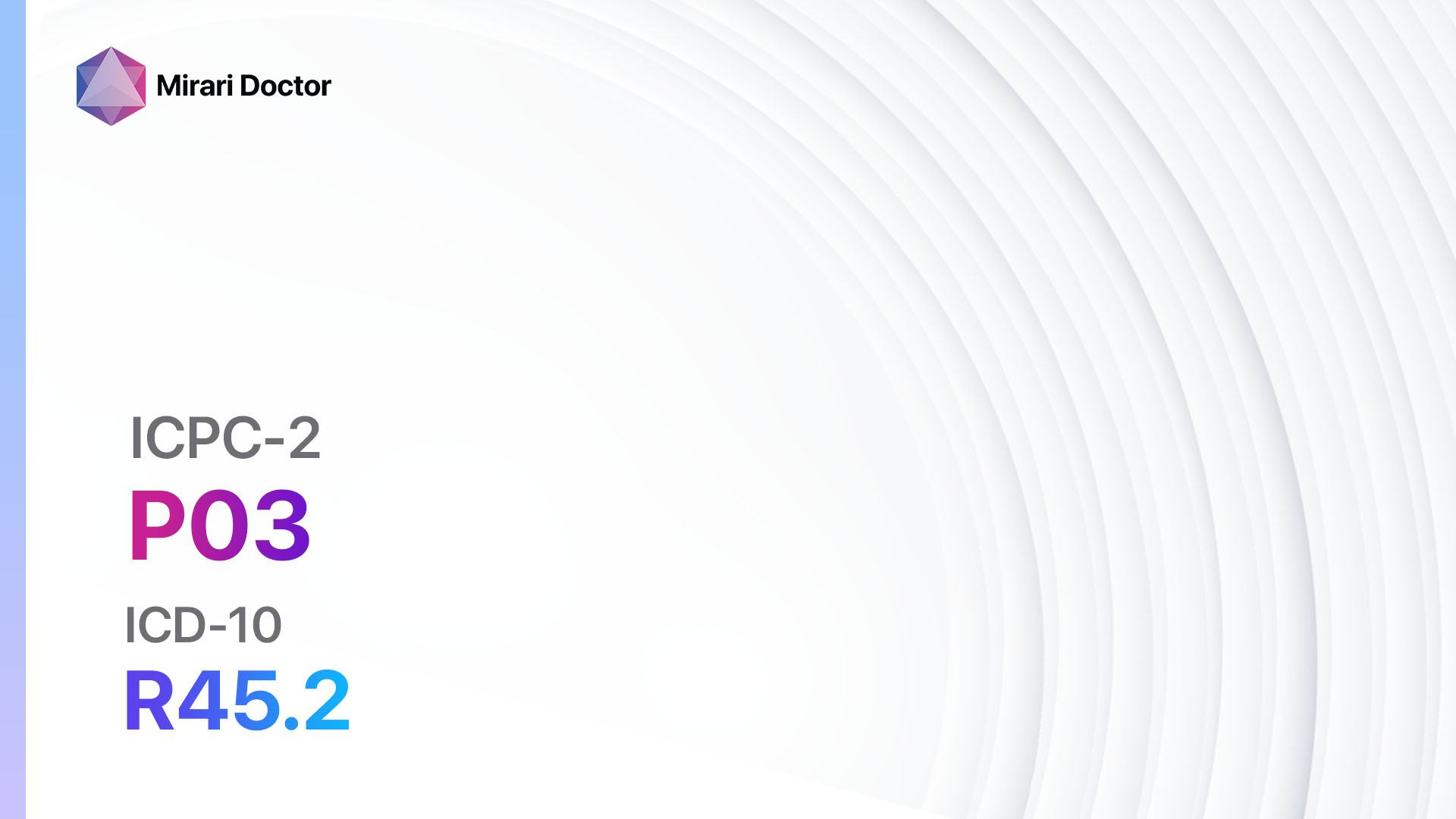
Introduction
Feeling depressed, also known as major depressive disorder, is a common mental health condition characterized by persistent feelings of sadness, loss of interest or pleasure, and a range of physical and cognitive symptoms. It is a significant condition that can greatly impact a person’s quality of life and daily functioning.[1] The aim of this guide is to provide healthcare professionals with a comprehensive overview of the diagnostic steps, possible interventions, and patient education for individuals experiencing depression.
Codes
Symptoms
- Persistent feelings of sadness, emptiness, or hopelessness
- Loss of interest or pleasure in activities once enjoyed
- Changes in appetite and weight
- Sleep disturbances, such as insomnia or excessive sleep
- Fatigue or loss of energy
- Feelings of worthlessness or excessive guilt
- Difficulty concentrating or making decisions
- Recurrent thoughts of death or suicide[2]
Causes
- Biological factors, such as imbalances in brain chemicals or genetics
- Environmental factors, including traumatic events, chronic stress, or a history of abuse
- Psychological factors, such as low self-esteem or a negative thinking pattern[3]
Diagnostic Steps
Medical History
- Gather information about the patient’s personal and family medical history, including any history of mental health conditions.
- Assess the duration, severity, and frequency of depressive symptoms.
- Identify any potential triggers or stressors that may contribute to the development or exacerbation of depression.
- Evaluate the patient’s social support system and level of functioning in daily life.[4]
Physical Examination
- Perform a thorough physical examination to rule out any underlying medical conditions that may be causing or contributing to the depressive symptoms.
- Pay particular attention to signs of thyroid dysfunction, as hypothyroidism can mimic depressive symptoms.
- Assess for any physical manifestations of depression, such as changes in appetite or weight.[5]
Laboratory Tests
- Conduct a complete blood count (CBC) to rule out any underlying medical conditions, such as anemia, that may be causing or exacerbating depressive symptoms.
- Measure thyroid-stimulating hormone (TSH) levels to assess for thyroid dysfunction.
- Consider additional laboratory tests, such as vitamin D levels or hormone levels, if there is suspicion of an underlying hormonal imbalance.[6]
Diagnostic Imaging
- Diagnostic imaging is not typically used in the diagnosis of depression. However, in certain cases, brain imaging techniques, such as magnetic resonance imaging (MRI), may be used to rule out other potential causes of depressive symptoms, such as brain tumors or structural abnormalities.[7]
Other Tests
- Psychological assessments, such as the Beck Depression Inventory (BDI) or the Patient Health Questionnaire (PHQ-9), can be used to assess the severity of depressive symptoms and monitor treatment progress.
- Consultation with a psychiatrist or mental health professional may be necessary for a comprehensive evaluation and diagnosis.[8]
Follow-up and Patient Education
- Schedule regular follow-up appointments to monitor the patient’s response to treatment and adjust interventions as needed.
- Provide education to the patient and their family about depression, its potential causes, and the importance of adhering to treatment.
- Encourage the patient to engage in self-care activities, such as exercise, maintaining a healthy diet, and practicing stress management techniques.
- Discuss the importance of seeking support from friends, family, or support groups.[9][10]
Possible Interventions
Traditional Interventions
Medications:
Top 5 drugs for depression:
- Selective Serotonin Reuptake Inhibitors (SSRIs) (e.g., Fluoxetine, Sertraline, Escitalopram):
- Cost: Generic versions can range from $10 to $50 per month.
- Contraindications: Hypersensitivity to SSRIs, concomitant use with monoamine oxidase inhibitors (MAOIs).
- Side effects: Nausea, headache, insomnia.
- Severe side effects: Serotonin syndrome, suicidal thoughts.
- Drug interactions: MAOIs, certain medications metabolized by cytochrome P450 enzymes.
- Warning: Increased risk of suicidal thoughts, especially in children and young adults.
- Serotonin-Norepinephrine Reuptake Inhibitors (SNRIs) (e.g., Venlafaxine, Duloxetine):
- Cost: Generic versions can range from $20 to $100 per month.
- Contraindications: Hypersensitivity to SNRIs, concomitant use with MAOIs.
- Side effects: Nausea, dizziness, sexual dysfunction.
- Severe side effects: Serotonin syndrome, increased blood pressure.
- Drug interactions: MAOIs, certain medications metabolized by cytochrome P450 enzymes.
- Warning: Increased risk of suicidal thoughts, especially in children and young adults.
- Tricyclic Antidepressants (TCAs) (e.g., Amitriptyline, Nortriptyline):
- Cost: Generic versions can range from $10 to $50 per month.
- Contraindications: Hypersensitivity to TCAs, recent myocardial infarction, concomitant use with MAOIs.
- Side effects: Dry mouth, constipation, sedation.
- Severe side effects: Cardiac arrhythmias, seizures.
- Drug interactions: MAOIs, certain medications metabolized by cytochrome P450 enzymes.
- Warning: Increased risk of suicidal thoughts, especially in children and young adults.
- Bupropion:
- Cost: Generic versions can range from $10 to $50 per month.
- Contraindications: Seizure disorder, eating disorder, concomitant use with MAOIs.
- Side effects: Insomnia, dry mouth, agitation.
- Severe side effects: Seizures, allergic reactions.
- Drug interactions: MAOIs, certain medications metabolized by cytochrome P450 enzymes.
- Warning: Increased risk of suicidal thoughts, especially in children and young adults.
- Mirtazapine:
- Cost: Generic versions can range from $10 to $50 per month.
- Contraindications: Hypersensitivity to mirtazapine, concomitant use with MAOIs.
- Side effects: Sedation, increased appetite, weight gain.
- Severe side effects: Serotonin syndrome, agranulocytosis.
- Drug interactions: MAOIs, certain medications metabolized by cytochrome P450 enzymes.
- Warning: Increased risk of suicidal thoughts, especially in children and young adults.
Alternative Drugs:
- Monoamine Oxidase Inhibitors (MAOIs) (e.g., Phenelzine, Tranylcypromine): Reserved for treatment-resistant depression due to dietary restrictions and potential drug interactions.
- Atypical Antidepressants (e.g., Trazodone, Vortioxetine): Can be used as alternatives or adjuncts to traditional antidepressants.
- Electroconvulsive Therapy (ECT): Reserved for severe or treatment-resistant depression.
Psychotherapy:
- Cognitive Behavioral Therapy (CBT): Focuses on identifying and changing negative thought patterns and behaviors associated with depression.
- Interpersonal Therapy (IPT): Addresses relationship issues and social functioning to improve depressive symptoms.
- Psychodynamic Therapy: Explores unconscious conflicts and unresolved issues that may contribute to depression.
Alternative Interventions
- Exercise: Regular physical activity has been shown to improve mood and reduce symptoms of depression. Cost: Varies depending on the chosen activity (e.g., gym membership, fitness classes).
- Mindfulness Meditation: Helps individuals develop awareness and acceptance of their thoughts and emotions. Cost: Free to learn, may require attending classes or workshops.
- Yoga: Combines physical postures, breathing exercises, and meditation to promote relaxation and reduce stress. Cost: Varies depending on the yoga studio or instructor.
- Acupuncture: May help alleviate depressive symptoms by stimulating specific points on the body. Cost: $60-$120 per session.
- Herbal Supplements: Some herbal supplements, such as St. John’s Wort, may have potential benefits for mild to moderate depression. Cost: Varies depending on the specific supplement.
Lifestyle Interventions
- Healthy Diet: Encourage the consumption of a balanced diet rich in fruits, vegetables, whole grains, lean proteins, and healthy fats. Cost: Varies depending on food choices and dietary preferences.
- Sleep Hygiene: Promote good sleep habits, such as maintaining a regular sleep schedule, creating a comfortable sleep environment, and avoiding stimulants before bedtime. Cost: Free.
- Stress Management Techniques: Teach stress reduction techniques, such as deep breathing exercises, progressive muscle relaxation, or mindfulness practices. Cost: Free.
- Social Support: Encourage the patient to seek support from friends, family, or support groups. Cost: Free or minimal cost for support group memberships or therapy sessions.
- Avoidance of Alcohol and Substance Abuse: Educate the patient about the negative impact of alcohol and substance abuse on depression symptoms. Cost: Varies depending on individual habits and access to treatment programs.
It is important to note that the cost ranges provided are approximate and may vary depending on the location and availability of the interventions.
Mirari Cold Plasma Alternative Intervention
Understanding Mirari Cold Plasma
- Safe and Non-Invasive Treatment: Mirari Cold Plasma is a safe and non-invasive treatment option for various skin conditions. It does not require incisions, minimizing the risk of scarring, bleeding, or tissue damage.
- Efficient Extraction of Foreign Bodies: Mirari Cold Plasma facilitates the removal of foreign bodies from the skin by degrading and dissociating organic matter, allowing easier access and extraction.
- Pain Reduction and Comfort: Mirari Cold Plasma has a local analgesic effect, providing pain relief during the treatment, making it more comfortable for the patient.
- Reduced Risk of Infection: Mirari Cold Plasma has antimicrobial properties, effectively killing bacteria and reducing the risk of infection.
- Accelerated Healing and Minimal Scarring: Mirari Cold Plasma stimulates wound healing and tissue regeneration, reducing healing time and minimizing the formation of scars.
Mirari Cold Plasma Prescription
Video instructions for using Mirari Cold Plasma Device – P03 Feeling depressed (ICD-10:R45.2)
| Mild | Moderate | Severe |
| Mode setting: 2 (Wound Healing) Location: 7 (Neuro system & ENT) Morning: 15 minutes, Evening: 15 minutes |
Mode setting: 2 (Wound Healing) Location: 7 (Neuro system & ENT) Morning: 30 minutes, Lunch: 30 minutes, Evening: 30 minutes |
Mode setting: 2 (Wound Healing) Location: 7 (Neuro system & ENT) Morning: 30 minutes, Lunch: 30 minutes, Evening: 30 minutes |
| Mode setting: 8 (Insomnia) Location: 7 (Neuro system & ENT) Morning: 15 minutes, Evening: 15 minutes |
Mode setting: 8 (Insomnia) Location: 7 (Neuro system & ENT) Morning: 30 minutes, Lunch: 30 minutes, Evening: 30 minutes |
Mode setting: 8 (Insomnia) Location: 7 (Neuro system & ENT) Morning: 30 minutes, Lunch: 30 minutes, Evening: 30 minutes |
| Mode setting: 7 (Immunotherapy) Location: 7 (Neuro system & ENT) Morning: 15 minutes, Evening: 15 minutes |
Mode setting: 7 (Immunotherapy) Location: 7 (Neuro system & ENT) Morning: 30 minutes, Lunch: 30 minutes, Evening: 30 minutes |
Mode setting: 7 (Immunotherapy) Location: 7 (Neuro system & ENT) Morning: 30 minutes, Lunch: 30 minutes, Evening: 30 minutes |
| Total Morning: 45 minutes approx. $7.50 USD, Evening: 45 minutes approx. $7.50 USD |
Total Morning: 90 minutes approx. $15 USD, Lunch: 90 minutes approx. $15 USD, Evening: 90 minutes approx. $15 USD |
Total Morning: 90 minutes approx. $15 USD, Lunch: 90 minutes approx. $15 USD, Evening: 90 minutes approx. $15 USD |
| Usual treatment for 7-60 days approx. $105 USD – $900 USD | Usual treatment for 6-8 weeks approx. $1,890 USD – $2,520 USD |
Usual treatment for 3-6 months approx. $4,050 USD – $8,100 USD
|
 |
|
Use the Mirari Cold Plasma device to treat Feeling depressed effectively.
WARNING: MIRARI COLD PLASMA IS DESIGNED FOR THE HUMAN BODY WITHOUT ANY ARTIFICIAL OR THIRD PARTY PRODUCTS. USE OF OTHER PRODUCTS IN COMBINATION WITH MIRARI COLD PLASMA MAY CAUSE UNPREDICTABLE EFFECTS, HARM OR INJURY. PLEASE CONSULT A MEDICAL PROFESSIONAL BEFORE COMBINING ANY OTHER PRODUCTS WITH USE OF MIRARI.
Step 1: Cleanse the Skin
- Start by cleaning the affected area of the skin with a gentle cleanser or mild soap and water. Gently pat the area dry with a clean towel.
Step 2: Prepare the Mirari Cold Plasma device
- Ensure that the Mirari Cold Plasma device is fully charged or has fresh batteries as per the manufacturer’s instructions. Make sure the device is clean and in good working condition.
- Switch on the Mirari device using the power button or by following the specific instructions provided with the device.
- Some Mirari devices may have adjustable settings for intensity or treatment duration. Follow the manufacturer’s instructions to select the appropriate settings based on your needs and the recommended guidelines.
Step 3: Apply the Device
- Place the Mirari device in direct contact with the affected area of the skin. Gently glide or hold the device over the skin surface, ensuring even coverage of the area experiencing.
- Slowly move the Mirari device in a circular motion or follow a specific pattern as indicated in the user manual. This helps ensure thorough treatment coverage.
Step 4: Monitor and Assess:
- Keep track of your progress and evaluate the effectiveness of the Mirari device in managing your Feeling depressed. If you have any concerns or notice any adverse reactions, consult with your health care professional.
Note
This guide is for informational purposes only and should not replace the advice of a medical professional. Always consult with your healthcare provider or a qualified medical professional for personal advice, diagnosis, or treatment. Do not solely rely on the information presented here for decisions about your health. Use of this information is at your own risk. The authors of this guide, nor any associated entities or platforms, are not responsible for any potential adverse effects or outcomes based on the content.
Mirari Cold Plasma System Disclaimer
- Purpose: The Mirari Cold Plasma System is a Class 2 medical device designed for use by trained healthcare professionals. It is registered for use in Thailand and Vietnam. It is not intended for use outside of these locations.
- Informational Use: The content and information provided with the device are for educational and informational purposes only. They are not a substitute for professional medical advice or care.
- Variable Outcomes: While the device is approved for specific uses, individual outcomes can differ. We do not assert or guarantee specific medical outcomes.
- Consultation: Prior to utilizing the device or making decisions based on its content, it is essential to consult with a Certified Mirari Tele-Therapist and your medical healthcare provider regarding specific protocols.
- Liability: By using this device, users are acknowledging and accepting all potential risks. Neither the manufacturer nor the distributor will be held accountable for any adverse reactions, injuries, or damages stemming from its use.
- Geographical Availability: This device has received approval for designated purposes by the Thai and Vietnam FDA. As of now, outside of Thailand and Vietnam, the Mirari Cold Plasma System is not available for purchase or use.
References
- American Psychiatric Association. (2013). Diagnostic and statistical manual of mental disorders (5th ed.). Arlington, VA: American Psychiatric Publishing.
- National Institute of Mental Health. (2021). Depression. Retrieved from https://www.nimh.nih.gov/health/topics/depression
- Malhi, G. S., & Mann, J. J. (2018). Depression. The Lancet, 392(10161), 2299-2312.
- Zimmerman, M., et al. (2018). A clinically useful depression outcome scale. Comprehensive Psychiatry, 86, 7-14.
- Maurer, D. M., et al. (2018). Depression: Screening and diagnosis. American Family Physician, 98(8), 508-515.
- Gartlehner, G., et al. (2016). Screening for depression in adults: An updated systematic evidence review for the U.S. Preventive Services Task Force. JAMA, 315(4), 380-387.
- Wise, T., et al. (2017). Common and distinct patterns of grey-matter volume alteration in major depression and bipolar disorder: Evidence from voxel-based meta-analysis. Molecular Psychiatry, 22(10), 1455-1463.
- Kroenke, K., et al. (2001). The PHQ-9: Validity of a brief depression severity measure. Journal of General Internal Medicine, 16(9), 606-613.
- National Institute for Health and Care Excellence. (2009). Depression in adults: Recognition and management. Clinical guideline [CG90].
- Cuijpers, P., et al. (2020). Psychological treatment of depression: A meta-analytic database of randomized studies. BMC Psychiatry, 20(1), 1-16.
Related articles
Made in USA


